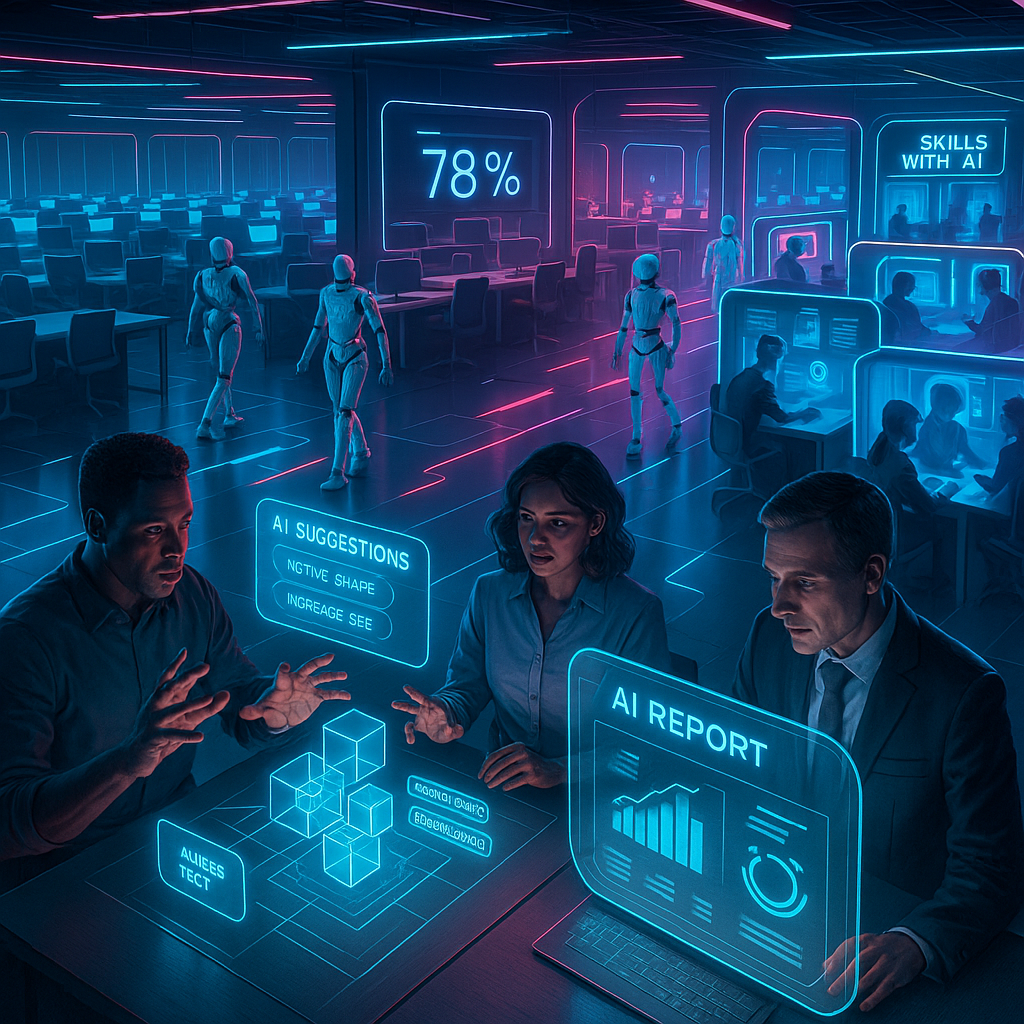Key Takeaways
- AI’s reach widens: AI automation now extends beyond repetitive tasks, affecting creative and managerial roles previously seen as uniquely human.
- Job security isn’t uniform: Sectors with high cognitive demands, such as law, design, and software, face increasing automation risks. Jobs emphasizing emotional intelligence and hands-on care remain more insulated for now.
- Skills gap doubles as existential gap: The report suggests traditional retraining may not keep pace as AI systems quickly render some human skills obsolete.
- Institutional trust under scrutiny: Survey data points to rising worker anxiety and declining trust in political and corporate leaders to manage a fair transition. This prompts new philosophical and policy debates.
- Eyes on 2025 guidance: The report’s call for collective action (including regulation, ethics, and reimagined education) sets priorities for governments, industry, and thought leaders as AI’s influence grows.
Introduction
Stanford’s 2025 AI Index Report, released this week, examines the accelerating advance of artificial intelligence and its disruptive impact on work, skill, and human value. As AI moves into domains such as creativity and management, the report calls for collective action to rethink education, policy, and what keeps us irreplaceably human.
Key Findings on Job Displacement
Stanford’s report estimates that 28% of current job tasks across industries could be automated by AI within the next three years. This marks a significant acceleration from prior projections. However, full job displacement remains less common than the transformation of specific tasks.
Data processing roles face the greatest impact. AI could automate up to 65% of their tasks. Most affected workers are expected to shift into hybrid positions that blend human judgment with AI capabilities.
Professional services (including legal and financial fields) demonstrate greater resilience. Only 15% of core tasks face immediate automation risk. The report attributes this to the value of human expertise in interpreting AI-driven insights.
Stay Sharp. Stay Ahead.
Join our Telegram Channel for exclusive content, real insights,
engage with us and other members and get access to
insider updates, early news and top insights.
 Join the Channel
Join the Channel
Emerging Job Categories
Three major categories of AI-enabled jobs have emerged that scarcely existed five years ago. These new roles merge technical literacy with human capacities such as emotional intelligence and ethical reasoning.
AI-human collaboration specialists are the fastest-growing segment, with demand up 312% since 2023. These professionals optimize collaboration between AI systems and human teams.
Seventy-three percent of new roles combine technical and philosophical understanding of AI. Such hybrid requirements challenge traditional education and professional development models.
Workforce Adaptation Patterns
Organizations investing in reskilling programs report 45% higher retention rates among employees affected by AI. The report notes that successful adaptation relies more on organizational culture than on technology alone.
Workers who engaged actively in AI implementation experienced notably different career paths than passive employees. Early adopters were three times more likely to take leadership roles overseeing AI-human teams.
Mid-career professionals displayed strong adaptability. Sixty-two percent transitioned successfully into AI-augmented positions within their existing fields, contradicting earlier predictions about older workers’ vulnerability to displacement.
Philosophical Implications
The report offers new focus on philosophical questions around human value in an AI-augmented workforce. Organizations deliberately addressing these issues recorded 40% higher employee satisfaction.
Traditional metrics of productivity and efficiency are blending with new standards of human-AI synergy. The report finds that the most successful companies preserve human agency while leveraging AI.
There is growing evidence that workers derive identity from uniquely human contributions, not just from completing tasks. This marks a shift in how work’s value is measured and understood.
Global Variations
Adaptation patterns differ widely across global economies. In developing countries, younger workforces often integrate AI more rapidly, though sometimes with more pronounced social disruption.
Nordic nations lead in successful AI-human integration, emphasizing worker autonomy and lifelong learning. These models correspond with 35% lower displacement rates compared to other developed economies.
Cultural perspectives shape how AI is adopted. Asian markets show the highest acceptance of AI collaboration. European workers, on the other hand, stress the importance of retaining traditional human-centered work practices.
AI technologies can be used to analyze cultural practices
Conclusion
Stanford’s latest AI Index illustrates a future where human creativity and critical thinking define value amid sweeping automation. The report suggests that the future of work lies in reinvention, not replacement, as technical fluency joins meaning-making at the center of new roles. What to watch for: how organizations reform their skill development programs and whether emerging jobs can keep pace with rising rates of automation in the next three years.
human cognitive abilities as the critical multiplier of AI value
Stay Sharp. Stay Ahead.
Join our Telegram Channel for exclusive content, real insights,
engage with us and other members and get access to
insider updates, early news and top insights.
 Join the Channel
Join the Channel





Leave a Reply